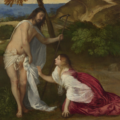Restraint and Closure: The Missing Year of Juan Salvatierra

The Missing Year of Juan Salvatierra
by Pedro Mairal
translated by Nick Caistor
New Vessel Press, 2013
Softcover, $15.49
Books and movies very often remain interesting right up until the end, but concluding a narrative in a satisfying way seems to require an almost impossible fortitude. Plots fizzle; characters fall by the wayside; half-hearted morals are haphazardly dispensed. Pedro Mairal’s The Missing Year of Juan Salvatierra, on the other hand, repeatedly provides the reader with such a satisfying sense of closure that one is tempted to dive right back in after finishing that slender novel so as to simply luxuriate in those 39 last phrases and paragraphs. These capstones are emblems of the sound construction of all of Mairal’s novels, stories, essays, and poems, which are always clear, deft, and compelling.
Mairal is a master craftsman comparable to compatriot Jorge Luis Borges, though he does not share that writer’s fascinations and fetishes. Mairal is drawn more toward quest tales and bildungsroman than toward labyrinths and mirrors. He first garnered critical and public acclaim with the 1998 publication of Una noche con Sabrina Love (One Night with Sabrina Love), the story of a teenaged boy who wins a contest and must then figure out a way to collect his prize, an evening with a beloved porn star. (The storyline was later employed in Argentine director Carlos Sorín’s 2002 hit film, Intimate Stories.) At the risk of spoiling Sabrina Love’s typically wonderful ending, it is perhaps the most moving account of a boy losing his virginity that I have ever read.
The Missing Year of Juan Salvatierra, Mairal’s debut translation into English, is the story of four continuous kilometers of artwork across sixty massive canvases painted over six decades by the narrator’s father, the eponymous Juan Salvatierra. A larger-than-life figure, Juan and his sublime paintings are depicted in this volume by his son, Miguel Salvatierra, who describes them and reflects upon them in 39 succinct and perfectly-framed vignettes.
Miguel and his brother Luis are obliged to go back to the little town where they grew up by the inheritance their deceased parents have left for them. When they arrive, on the border between Argentina and Uruguay, they are met by their father’s gargantuan oeuvre. The brothers would like to sell the shed where it is stored to a local businessman, but first they need to get rid somehow of Salvatierra’s sixty painted rolls. It is no simple task. They are greeted with indifference and incompetence by the municipal authorities. But the brothers eventually succeed in attracting the interest of an Amsterdam art gallery, which sends a team to scan the canvases in their entirety and deliver them digitally to Holland so that a final acquisition decision may be made.
“We occupy the places our parents leave blank,” Miguel says. But Juan Salvatierra, with his four kilometers of forms and lines and colors, has left very little blank. On an early inspection of the paintings, Miguel wonders, “What was this interlacing of lives, people, animals, days, nights, catastrophes?” His father’s paintings seem to contain every thing: glory, tragedy, boredom, the land, and the people on it—even Miguel himself.
So influenced is Miguel’s vision of the world by his father’s paintings that it proves virtually impossible for him to observe and opine on his own: “I knew—I had learned—what kind of skies interested him and so some afternoons when I went to the shed after school, I would say, ‘There’s a good sky outside,’ and we would go out to look. It’s something I still do without realizing it, although my father has been dead these many years.” Anyone who’s lost anyone who once took part in their daily life will sympathize with this sort of slip. It is the urge to call a sibling to share in the outrage over the defeat of a favorite football team, the reflex of starting to fill a water bowl for a dead dog.
But not everyone’s daily life is so wholly determined by someone else’s way of seeing. Mairal’s master craftsmanship lies in touches like the “I had learned”. The dashes are a rare flourish of punctuation in otherwise steady and straightforward prose; this is what makes, pushing the phrase to stand out so starkly and so ominously. Miguel does not naturally share in the rich cornucopia of his father’s vision: he has had to learn. His role is the toddler chasing in vain after a grown man’s loping stride. It gets preserved in “I had learned” like an ancient bug in amber, still containing traces of life. At one point, Miguel recalls an adolescent erotic nightmare. In it, he clings to the body of a naked woman. “But I squeezed her so tight,” he says, “she began to soften, to crumble into colors.” The young boy transforms his erotic energies and Freudian conflict, trying to let go of his father’s sway, leading hims not to freedom but to frenzy: “Terrified, I would get desperate, smear her against the sheet as if trying to kill her, as if trying to reach her, until she was no more than an impossible, beautiful, two-dimensional figure, painted forever on the canvas.”
In the last sentence of Vignette 28, Miguel reflects upon a canvas portraying his own ex-wife and son. “My father had succeeded,” he says, “in capturing what had slipped through my fingers.” In learning how to see like his father, Miguel has lost his unmediated access to the world. Yet this is another inheritance from his father, who was made mute as a child when he fell from a horse; the same fall which forced Juan Salvatierra—as an invalid—to accompany his female relatives in their domestic activities. Unable to express himself in words, Salvatierra paints. Thus what is negated in the father is now, in this volume, rejuvenated by the son.
The ultimate fate of Juan’s paintings is to drift silently like a digital river down the walls of an Amsterdam gallery, engulfing their viewers in what Miguel calls “my memory, my childhood. Salvatierra’s years, the time we had together, his colors and all his effort, his talent, his days, his enormous, silent affection for the world.” The paintings become “cine mudo,” Spanish for “silent film” but literally “mute cinema.” Where his father’s works bleed into one another to form a continuous whole, Miguel’s writing focuses instead on frames, well-crafted and individual objects. If Juan Salvatierra’s art is one of excess, Miguel’s is one of meticulous restraint. Each of the 39 little chapters in this book strikes a perfect balance between plot and meditation. There is never an idea or even a single word too many or too few.
This contrast between the styles of father and son is rooted in the sharp divergence between their respective notions of time. “Sometimes the force driving things on like a torrent is so strong that the figures start to lean, to lose their balance,” Miguel writes of his father’s work. “There are parts of the canvas where they are painted horizontally, dragged along by the rushing current of life, as if the force of time were greater than the force of gravity.” For Juan Salvatierra, time is duration. It is Henri Bergson’s two metaphysical spools, where one unwinds the tape of life as the other winds it up.
For Miguel, time is the measured tick of the clock. Miguel’s narration frequently lingers on minute observations, and these details become some of the most powerful passages in the book. We learn, in one instance, where his father’s canvases come from: “In the best of cases, the canvas might be proper white material meant for painting on; in the worst, when the money was only just enough to cover our household expenses, it could be sacks we asked for from the grain silos after the grain had been unloaded. Between those two extremes, Salvatierra could make his canvas out of anything: old tarpaulins, armchair upholstery, bedspreads, awnings.” We learn that he made brushes out of cheap horse tails or hair from the inside of pigs’ ears, retrieved on Tuesdays, or else “the tiny feathers collected from the floor of the cages out in the yard where Luis kept a canary.” Mairal’s supreme matter-of-factness is a kind of lyrical perfection, and it enables us to hold in our own hands the tools of Juan Salvatierra, a touch that makes complete our fellow feeling for Miguel.
As the hands of a clock return again and again to the same positions, Miguel must revisit his past. At the same time, he must strive to free himself from the fluidity of his father’s vision, according to which “there is no ‘inside,’ no home; everyone is vulnerable in the constantly evolving world of color.” Such boundlessness is unsustainable as well as terrifying, and the time has come for Miguel to erect within the world the walls that will permit him to safeguard against the ravages of contingency. The opportunity is afforded him by the mysterious disappearance of one of Salvatierra’s canvases. As he says at the end of 27:
Finding the missing roll was something I needed to do so that my father’s work would not be infinite. If one part was missing, I wouldn’t be able to take it all in, to know it in its entirety. There would still be mysteries, things that Salvatierra had perhaps painted of which I knew nothing. But if I could only find it, this world of images would have a limit. The infinite would reach an end, and I could discover something he hadn’t painted. Something of my own. Yet these are interpretations I’m making now. Back then I was simply obsessed with finding the roll; I didn’t even think about these things.
Miguel embarks upon his quest to abolish the infinite. He tracks down the missing roll in Uruguay, where he also makes a plan to smuggle the rest of the paintings en their route to Amsterdam. Problem seemingly resolved. Family fortune secured; father’s ghost defeated. Freedom checked; fluidity dammed and drained.
However, unlike in the writings of Borges, Mairal’s prose is not a pendulum that swings back and forth between two extremes. We are not brought from absolute limitlessness to absolute limitedness. The real brilliance of Miguel’s quest for restraint is the restraint it itself shows in its unfolding. The Missing Year of Juan Salvatierra is an ode to measure. It is an homage to the quotidian. It is also the story of three generations of men and of the relationships between them and the extent to which they are defined by work, and by works. Like many of Mairal’s novels, it is a sort of bildungsroman, in which our hero makes his peace with time not only by finally managing to mark its passage, but also by seeing how endings bring about beginnings.
The conclusions to each of the chapters in Salvatierra are so satisfying because they are always bidirectional, providing a thoughtful summary of what we have just read as well as a delicate suggestion of what we are about to read next. And at the end of the novel, Miguel sits with his son, now twenty-three years old, at the museum in Amsterdam where they watch the digital version of Juan Salvatierra’s paintings float by:
Gastón and I could see that the fish and circles in the water painted on what we had thought was the end of the last roll matched up exactly with the circles and fish of the very beginning, painted by Salvatierra when he was barely twenty.
Order is neither the opposite nor the equivalent of chaos; we the readers want neither to merely let time wash over us nor to stop time by the book’s end. Like the novel’s flashbacks and scenes from the present plot, times and timings coexist for Mairal, as do order and chaos. There is no moral to the story of Juan, Miguel, Luis, and Gastón Salvatierra. It’s just a story about a man who mourns, and in so doing, becomes himself.
About Jennifer Croft
Jennifer Croft is a writer, translator, critic, and founding editor at The Buenos Aires Review, a fully bilingual magazine of new writing from across the Americas. She holds an MFA from The University of Iowa and a PhD in Comparative Literary Studies from Northwestern University, where she wrote her dissertation on duels in twentieth-century literature.





